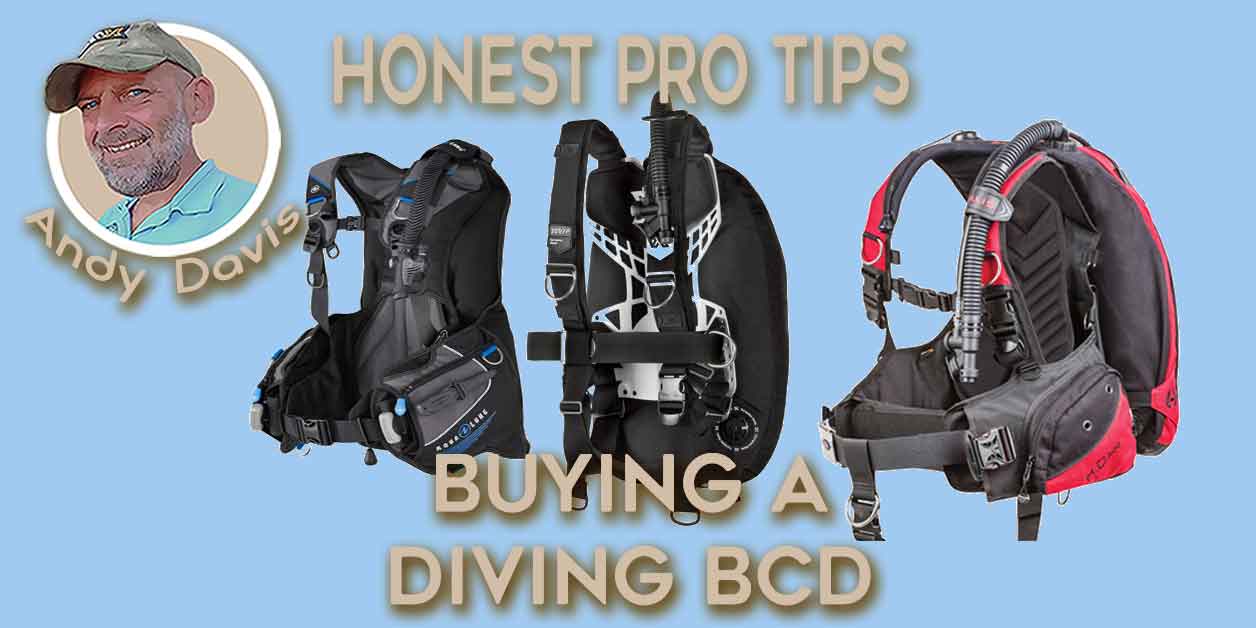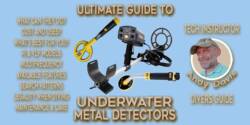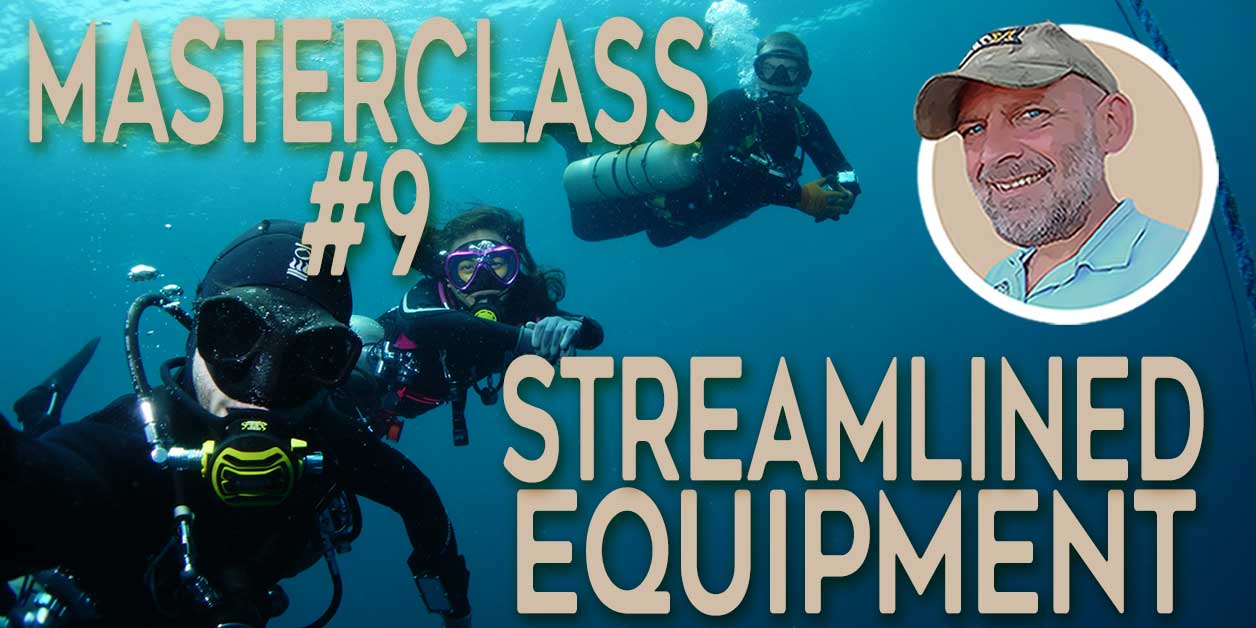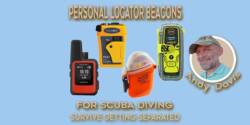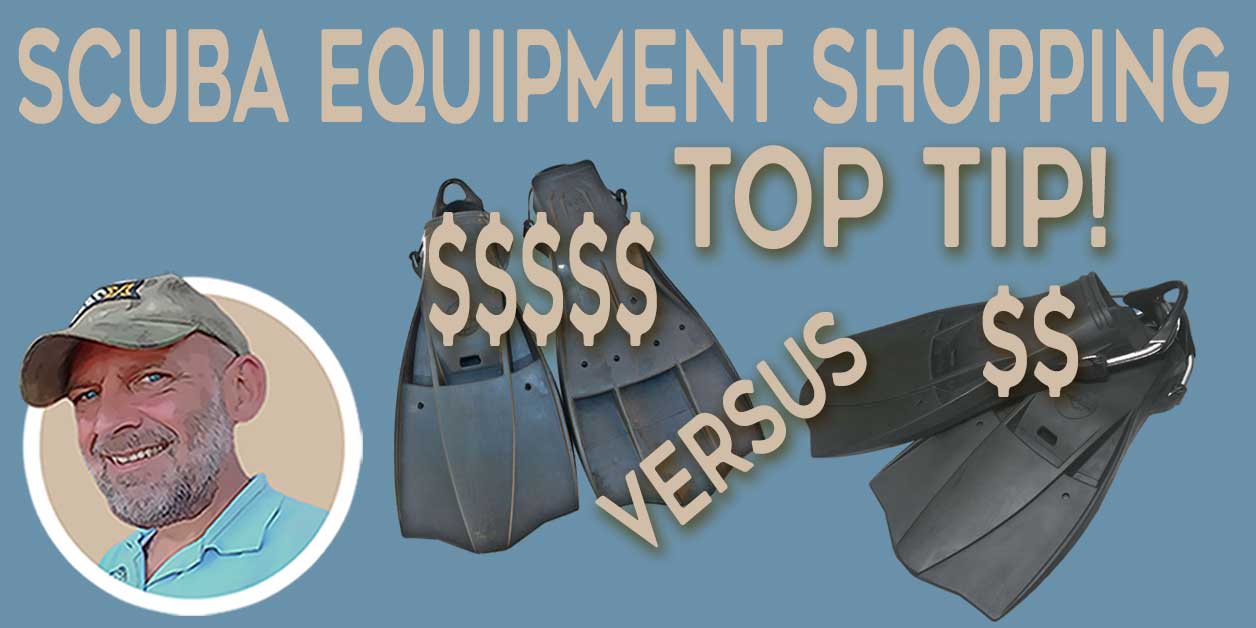Scuba Diving Regulator Buyers Guide
When I was a novice diver, I wish I had more advice before buying a scuba diving regulator. It would have helped me avoid costly and regretful purchasing decisions. Decades later, and having owned many sets of diving regulators over the years, I decided to write a guide so that other divers won’t make the mistakes that I did.
Diving regulators are one of the biggest purchases you will make as a diver and there are many factors to consider when deciding what is best for you.
What factors should I consider when buying a scuba diving regulator?
Scuba diving regulator performance
Regulators are tested and rated on their ability to supply the volume of gas and their work of breathing. Higher-performance regulators can supply greater volumes of gas at deeper depths, and still have easier work breathing. Supplying a higher volume of gas is typically only an issue when deep technical diving; due to the increased density of gas being breathed.
Scuba diving regulator performance is not a factor that should greatly concern most divers if they are staying shallow and/or diving in warm waters. But you do need enough performance that you will be content with the work of breathing: it has a direct impact on dive comfort, stress and the risk of hypercapnia.
Regulators with better performance do a better job of preventing CO2 retention; which is a factor in helping you breathe less gas when diving.
Also, consider whether the regulator is balanced or unbalanced and if it is environmentally sealed; making it more or less suitable for cold water diving.
Scuba diving regulator cost
Different regulators have different costs. This may be because of the features and performance of the regulator, it may be location biased (import duties, internet versus shop pricing etc) and it can be a factor of added $$ simply due to ‘brand value’ and manufacturer market placement.
The typical instructor’s advice is “buy the best you can afford“, but in reality; you should buy the best that you need; unless, of course, you enjoy making high-end purchases for that end alone.
High-end scuba diving regulators
Mid-range scuba diving regulators
Economy scuba diving regulators
Scuba diving regulator reliability
There is a difference between a ‘work-horse’ regulator and a ‘thoroughbred’ regulator. The types of regulator often used for dive shop rentals tend to be work-horse; cheap, reliable and easy to maintain.
Thoroughbred regulators are high-performance and, typically, require more complex service; and have more parts to go wrong. However, there are high-performance regulators on the market that also have a solid reputation for reliability.
Materials also play a large role in the lifespan of the regulator. Consider metal versus plastic. Chrome-plated brass versus titanium etc. There is also the issue of regulator hoses – rubber versus nylon. Both have pros and cons.
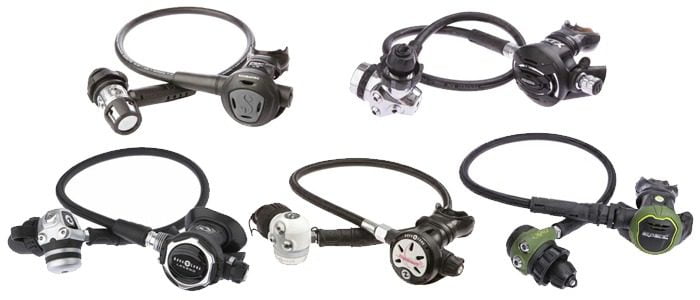
Scuba diving regulator design
There are a number of factors to consider in regulator design. These include 1st and 2nd stage features.
Location and Number of HP/IP ports. These determine your options to refine your hose routing and, consequently, streamline them. This is especially important for technical, cave and wreck divers; but also something regular open water divers can also consider as an improvement to their off-the-shelf regulator. It is also important if you are planning to use a pressure sensor/transmitter, rather than a mechanical SPG.
DIN or Yoke. DIN is generally considered safer and more reliable. Yoke offers fewer headaches when travelling to dive; as many dive centres only offer yoke valve cylinders. You can buy adapters for DIN-to-Yoke conversion.
Ambidextrous 2nd Stages. These work when routed from either left or right side. There are no ‘upside-down’ issues with them. This is particularly beneficial if sharing air in an emergency.
Flow Control Knob. Some regulators come with a 2nd stage adjustment that influences the work of breathing (or ‘cracking pressure’). These allow instant adjustment for personal preferences. Some also have a ‘de-tuning’ adjustment which creates a vortex inside the 2nd stage and lowers the risk of free flow (especially on water entry/at the surface).
Colour and Trend. Yes, this is also a factor for some divers… and there’s nothing wrong with that. Some manufacturers offer 2nd stage faceplates in different colours (like pink, for instance). Some look cool and modern; others are more retro or basic; or even cheap and plastic.
Universality. Some manufacturers use non-standard sizes for hoses, mouthpieces and other connections. This means you cannot make quick and easy replacements away from an authorized retailer. It also means expense because you cannot later opt for generic replacements.
After-sales customer service
Different manufacturers have varied standards of customer service. This is important if something goes wrong with the regulator. It also affects the generosity of any warranty given upon purchase.
Consider these factors also, if thinking to buy second-hand.
Peace of mind is an important factor, should your new regulators have a glitch. Choosing a ‘no quibble’ manufacturer often has an impact on the price tag – but can save you money in the long run.
Ease of service/maintenance
Service/maintenance of regulators is typically only performed by manufacturer-qualified service technicians. Manufacturers generally limit the availability of specialist tools and parts to the technicians they qualify; and those technicians usually have to be associated with official, authorized retailers.
This means that access to timely service and maintenance on your regulators can be determined by the proximity of an authorized service centre. This can vary greatly regionally and globally. Can you drop off regulators for service/repair on your way home from work… or will you have to courier them away. What is your repair service going to be like if a problem occurs with the regulators whilst on vacation?
Scuba diving regulator weight
Regulators can vary greatly in weight and bulk. They are often the heaviest item in your scuba kit (weights not included). This can be important if you will travel extensively with the regulators; especially if airline baggage weight allowances will be an issue.
Some manufacturers produce titanium regulators which offer considerable weight savings, but these regulators can have drawbacks – such as incompatibility with nitrox.
Future-proofing investment
It helps if you have an idea of your future diving goals; especially if you might get involved in wreck, cave or technical diving.
The requirements for technical/overhead diving regulators are much more extensive than for open-water recreational diving. These include the performance and design of the regulator; you will need DIN valves and the location/number of ports becomes an important issue. (BCD)
SEE ALSO: Choosing a Buoyancy Control Device (BCD)
About The Author

Andy Davis is a RAID, PADI TecRec, ANDI, BSAC, and SSI-qualified independent technical diving instructor who specializes in teaching sidemount, trimix, and advanced wreck diving courses.
Currently residing in Subic Bay, Philippines; he has amassed more than 10,000 open-circuit and CCR dives over three decades of challenging diving across the globe.
Andy has published numerous diving magazine articles and designed advanced certification courses for several dive training agencies, He regularly tests and reviews new dive gear for scuba equipment manufacturers. Andy is currently writing a series of advanced diving books and creating a range of tech diving clothing and accessories.
Prior to becoming a professional technical diving educator in 2006, Andy was a commissioned officer in the Royal Air Force and has served in Iraq, Afghanistan, Belize, and Cyprus.
In 2023, Andy was named in the “Who’s Who of Sidemount” list by GUE InDepth Magazine.
Purchase my exclusive diving ebooks!
Originally posted 2015-09-20 20:03:42.








